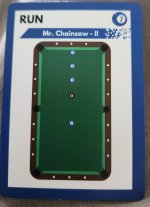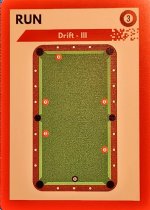SeniorTom
Well-known member
I am always looking for ways to improve cue ball control, as I only about 8 months experience playing pool. I can pot the balls quite well, but my bane is cue ball control. I purchased the hill hill card deck that has many exercises in it. A card here shows a lineup of balls to be pocketed with ball in hand, and pocketing the 8 ball last. There are probably many different ways to execute this exercise, but I was wondering if anybody had any suggestions on how they would proceed? Thanks

